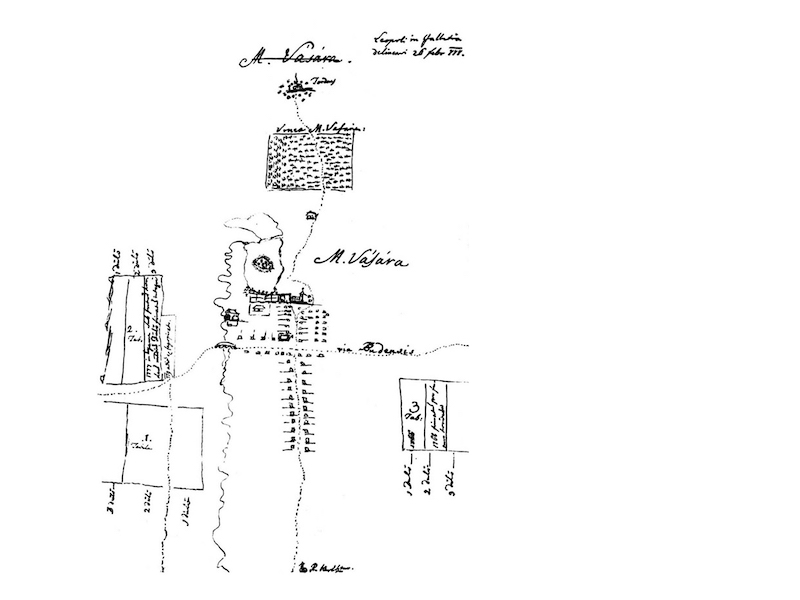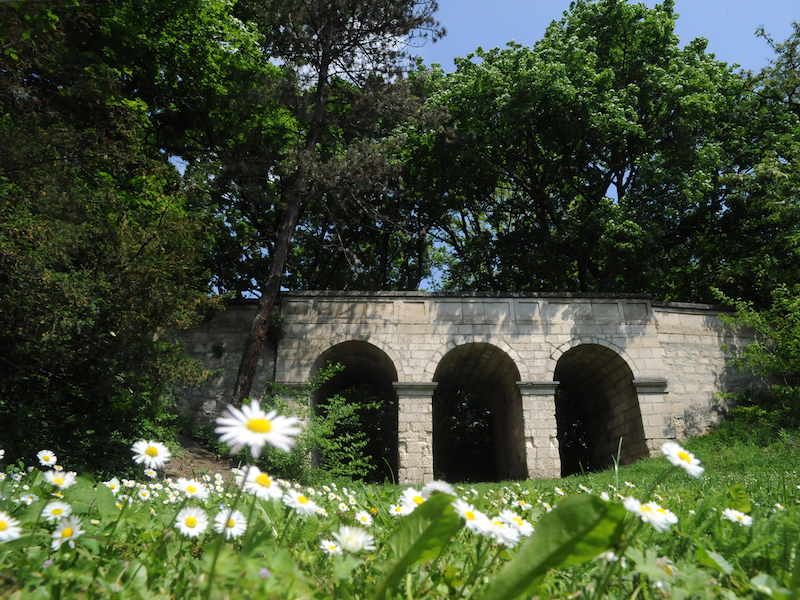
NOVELISTIC PARK HISTORY
E arly in the morning I walked in the garden, which the Graf has laid out in the style, universally called upon the continent English, that is, a style in which art is not allowed to disguise nature. It was a delightful spring morning, - all around me appeared so like England, that I almost fancied myself in my own country.’ (Richard Bright, 1815.)
W
hen my Brunszvik grandfather took over Martonvásár, he found only a water-covered wilderness there. There was nothing else but a house, a few shepherds’ huts and a tree in the eight thousand acres of dry land,’ wrote Theresa Brunszvik in her diary. This is evidenced also by a map prepared during the military surveys ordered by Joseph the Second, showing no forest. The former owner of Martonvásár was the Brunszvik family, and later the estate was bought by the Dreher family. It was due to Antal Brunszvik Sr. and his descendants that the place has been transformed into a cultural landscape from a wasteland without trees and inhabitants.
In the maps prepared by Antal Brunszvik Sr. in 1777, we can see the tree plantations, the lake that is still visible today, and the water mill built on the stream. Primarily fruit trees, willows and linden-trees were planted. In 1784-85 Antal Brunszvik Jr. built a one-storey manor in Baroque style and continued to create an English Garden. First, the ornamental garden and the island were reconstructed. Then the landscaping between the building and the lake followed. Chestnut trees and oak trees were also planted in the park.
At the end of the 1790s, after the Count's early death, his wife, Baroness Seeberg had the swamp in the northern part of the estate drained without the help of engineers. The garden was formed year by year and wore the signs of sentimentalism that sought emotional effects. Theresa Brunszvik, for example, planted a ‘Republic of Linden Tree Circle’, a round area with tall, noble linden trees; each tree bearing the name of a member. Beethoven was also included among the members. One of those trees, a small leaf linden tree still lives there. Ferenc Brunszvik, the grandchild, began to modernize the estate from the early 1800s. The designer of the garden was most likely Heinrich Nebbien. The plane-trees, the ashen trees, the pagoda-tree, the varnish-tree, and the alder trees were planted in the area at that time.
The park has taken its natural look, which is still unchanged today. The park hosts the Hungarian Academy of Sciences since 1953.
At the end of the 1790s, after the Count's early death, his wife, Baroness Seeberg had the swamp in the northern part of the estate drained without the help of engineers. The garden was formed year by year and wore the signs of sentimentalism that sought emotional effects. Theresa Brunszvik, for example, planted a ‘Republic of Linden Tree Circle’, a round area with tall, noble linden trees; each tree bearing the name of a member. Beethoven was also included among the members. One of those trees, a small leaf linden tree still lives there. Ferenc Brunszvik, the grandchild, began to modernize the estate from the early 1800s. The designer of the garden was most likely Heinrich Nebbien. The plane-trees, the ashen trees, the pagoda-tree, the varnish-tree, and the alder trees were planted in the area at that time.
The park has taken its natural look, which is still unchanged today. The park hosts the Hungarian Academy of Sciences since 1953.

NATURAL VALUES
A lthough it can be seen from the history of the manor park that it is an artificial garden planted by people, there are semi-natural forests of oak, ashen and ulmus trees along the Saint László stream. The herbaceous level of the gallery forests is rich in flowering plants, some of which were planted and the rest is natural. The English Garden has been a nature reserve since 1953.In the spring, the park is covered with yellow eranthis flower carpet, yellow star-of-Bethlehem, yellow anemone, yellow pilewort decorated by blue scilla flowers and fragrant violets. In the area of the gallery forest you can also find wild garlic, hollowroot, snowdrops and Lenten rose. At the beginning of summer, before the complete closure of the canopy, the common lungwort and the medical Solomon's seal flower. In the autumn, the colours of the park's foliage well reflect the original intention of the gardeners. In addition to native tree species (small-leaved linden, Turkey oak, common oak and chestnut oak, tall ashen, hornbeam, common alder, etc.), there are many exotic tree species in the park, such as bald cypress, dawn redwood, Kentucky coffeetree, plane-tree, Atlas cedar, etc.). Trees attaining age of Methuselah planted in the early 1800s can also be seen such as the small leaf linden behind the manor house or the bald cypress on a lakeside.
From spring to autumn bird song can be heard all over the park. There are dozens of bird species regularly nesting here. It is worth taking time to observe special bird species such as black woodpecker, long-eared owl, short-toed Treecreeper or Eurasian wryneck. There is always something to discover also in winter. You can see non-migratory birds, for example Eurasian blue tit, long-tailed Bushtit or Eurasian wren. We can observe grey herons or mallards around the lake.
The Centre for Agricultural Research maintains the park's natural values as a good owner.
The Centre for Agricultural Research maintains the park's natural values as a good owner.


